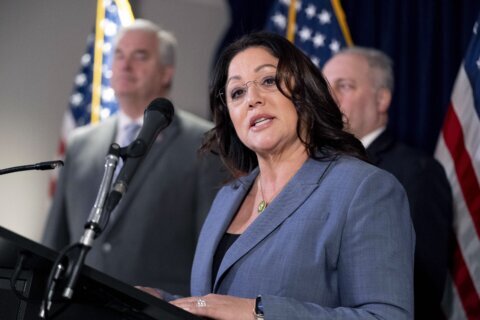Chances are, you’ve been there: You head to Trader Joe’s to buy caramel popcorn, churro bites and roasted gorgonzola crackers, or to Costco for its Kirkland Signature mini peanut butter cups and take-and-bake pizza.
But when you get to the store, your favorite treats aren’t on the shelf. And, to your horror, you learn they’re not coming back.
They’ve been discontinued.
It’s one of the most disappointing experiences as a grocery shopper. Why a beloved product has disappeared ranks as one of the most common questions customers ask stores. Fans run social media accounts dedicated to tracking discontinued products at Trader Joe’s, and others blog about long-lost items at Costco.
“We understand that it can be disappointing — devastating, even,” Trader Joe’s says on its “discontinued product feedback” contact page for customers.
There are several reasons Trader Joe’s, Costco and other stores suddenly stop selling customer favorites.
Sometimes products are seasonal, or a manufacturer always planned to make them for a limited time. Also, for stores like Costco and Trader Joe’s, discontinuing items can reinforce the treasure hunt-like appeal of these stores.
But more often, other strategies are at play.
One major factor: It’s difficult to get shelf space inside Trader Joe’s and Costco and stay there. These companies sell a limited number of items — only the products in highest demand from customers.
That’s quite a different strategy from supermarkets, as well as the likes of Walmart and Amazon, which offer a wide array of foods and brands. Costco, for example, sells around 4,000 different products at a given time. Traditional supermarkets typically sell 40,000.
Both companies’ ability to keep prices below most of their competitors hinges on turning over high volumes of top-selling merchandise every minute, every day.
If an item isn’t selling fast enough on the shelf at Trader Joe’s or is collecting dust at Costco warehouses, the companies need to switch to something else that customers will snap up.
“If you don’t have high volume or growing volume, the costs of producing and handling a slow-selling product are such that it doesn’t make business sense,” Trader Joe’s vice president of marketing Matt Sloan said in a company podcast earlier this year.
Other times, it’s the product itself: Companies will pull items if suppliers raise the price too much or the quality drops.
“Costco would rather not sell an item than sell it at a price that’s too high,” said Chuck Howard, an assistant professor of marketing at Texas A&M’s Mays Business School. “It would be off-brand for them to be selling things that consumers think would be too expensive.”
For example, about five years ago Costco replaced a $27 10-pound boneless, skinless frozen chicken breast from Perdue with a $21.99 Wayne Farms version, said Marcus Walker, an assistant buyer of frozen foods at Costco from 2005 to 2020.
Items that are cheaper at other stores are also prime to eliminate.
Costco wants its products to be the lowest-priced option. It pulled Hot Pockets because it wasn’t able to match Sam’s Club prices on the product, Walker said.
Costco’s teams buy their suppliers’ products at competitors’ stores and test them to compare the quality against Costco’s. If they find an item tastes better somewhere else, they’ll ask the supplier to improve it for Costco, Walker said — and if that doesn’t happen, Costco will look to replace it.
Another issue, which the pandemic underscored, is the stability of product supply. If a manufacturer can’t produce enough of an item, the companies will stop selling it and replace it with something they can consistently keep on shelves.
In 2020 and 2021, with demand sky-high from customers stocking up on groceries during the pandemic, manufacturers halted production of many secondary products to make only their highest-demand items. And even as demand eased this year and factories returned to running at more normal capacity, manufacturers still aren’t making as wide a variety of items as they did before the pandemic.
Hormel Foods, the maker of Skippy and Spam, and Mondelez,, which owns brands like Oreo, are among the companies that have said recently they are reducing the number of products they’re selling to focus on their top-performing ones.
Angela Ackerman, who runs the Instagram account @Costcoguide with more than 230,000 followers, said Costco fans often ask her why they can’t find Costco’s dried dark chocolate mangoes in particular.
“They fall in love with something and want to see it again,” she said.
Scarcity can fuel sales, as Ackerman knows. When she sees a notice at Costco that it will no longer sell a prized item, she buys more before it runs out.”If I know it’s going to be gone, I stock up.”







